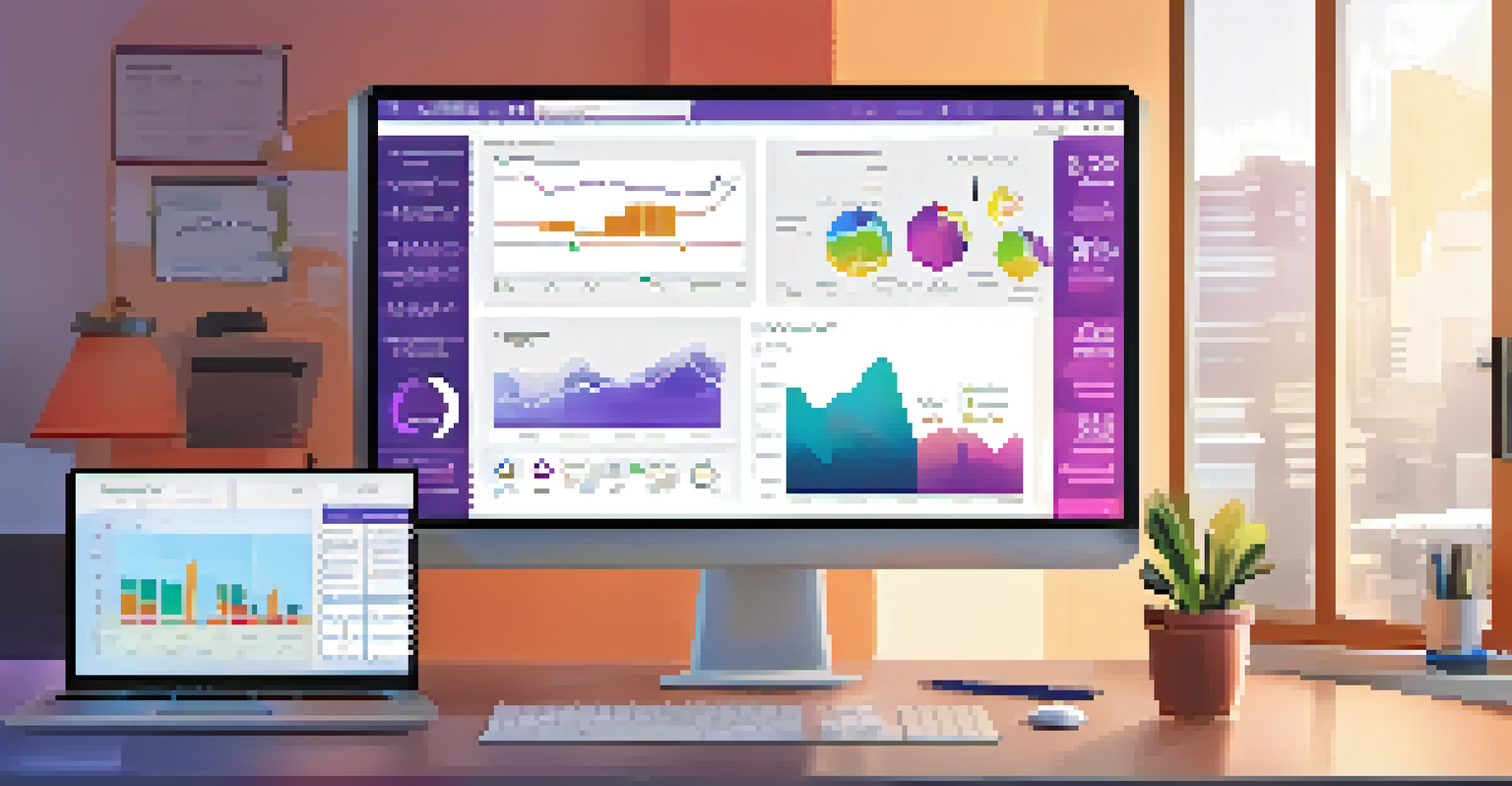Understanding Learner Profiles Through Learning Analytics

What Are Learner Profiles in Education?
Learner profiles are personalized representations of students' skills, preferences, and learning habits. They provide insight into how each student learns best, enabling tailored educational approaches. Think of it like a roadmap that guides educators in understanding the unique journey of each learner.
Data is the new oil.
These profiles can include information about a student's interests, strengths, areas for improvement, and preferred learning styles. By collecting this data, educators can create a more engaging and effective learning environment. This personalization helps students feel more connected to their education.
Ultimately, learner profiles serve as a valuable tool for fostering student engagement and success. They highlight the diversity in classrooms and remind us that every student has their own path. Understanding these profiles is key to unlocking each student's potential.
Introduction to Learning Analytics
Learning analytics involves collecting, analyzing, and interpreting data about learners and their contexts. This data can come from various sources, such as assessments, interactions with learning materials, and even social media. The goal is to gain insights that can help improve educational outcomes.

Imagine it as a detective unraveling clues to understand how students learn. By examining patterns and trends in the data, educators can identify what works and what doesn't. This process ultimately aims to enhance the learning experience for every student.
Personalized Learning with Profiles
Learner profiles provide insights into individual students' skills and preferences, allowing for tailored educational approaches.
By leveraging learning analytics, institutions can make data-driven decisions that directly impact student success. It's about transforming raw information into actionable insights that benefit both educators and learners alike.
The Importance of Data-Driven Decisions
Data-driven decisions are crucial in today's educational landscape. They empower educators to make informed choices based on evidence rather than intuition alone. This approach helps ensure that teaching methods align with student needs, leading to better outcomes.
The goal is to turn data into information, and information into insight.
For instance, if data shows that a particular teaching strategy isn't resonating with students, educators can adapt their approach. This flexibility is vital in meeting the diverse needs of learners in a classroom. It can be compared to a chef adjusting a recipe to suit the tastes of their guests.
Ultimately, prioritizing data-driven decisions fosters an environment of continuous improvement. It encourages educators to be proactive rather than reactive, ensuring that every learner receives the support they need to thrive.
How Learning Analytics Shapes Learner Profiles
Learning analytics plays a pivotal role in shaping and refining learner profiles. By analyzing data from various assessment tools, educators can gain a clearer picture of each student's progress. This information becomes the backbone of a dynamic and evolving learner profile.
For example, if analytics reveal that a student excels in visual learning but struggles with written assignments, educators can adjust their teaching methods accordingly. This targeted approach enhances the effectiveness of instruction and helps students feel more empowered in their learning journey.
Data-Driven Decisions Enhance Learning
Utilizing data analytics empowers educators to make informed decisions that improve teaching methods and student outcomes.
As a result, learning analytics not only informs the creation of learner profiles but also keeps them relevant. The more data educators gather, the more they can tailor their strategies to meet each student's evolving needs.
Utilizing Technology in Learning Analytics
Technology plays a significant role in the realm of learning analytics. Various software and platforms are designed to collect and analyze data efficiently. These tools streamline the process, making it easier for educators to access valuable insights.
Think of technology as a magnifying glass that helps educators zoom in on key details about student performance. With user-friendly interfaces and real-time data, teachers can quickly identify trends and make timely interventions. This immediacy is crucial in supporting student growth.
Moreover, technology enables collaboration among educators, allowing them to share insights and strategies. When teachers work together, they can create a more cohesive learning environment, ultimately benefiting all students.
Challenges in Implementing Learning Analytics
Despite its benefits, implementing learning analytics comes with challenges. Data privacy concerns are a significant issue, as schools must safeguard sensitive student information. Balancing the need for data with ethical considerations is crucial.
Additionally, educators may face hurdles in integrating analytics into their existing teaching practices. Some may feel overwhelmed by the technology or unsure about how to interpret the data. This uncertainty can hinder the potential of learning analytics to enhance student learning.
Technology Supports Learning Analytics
Innovative technology tools streamline data collection and analysis, helping educators identify trends and collaborate effectively.
To overcome these challenges, training and support for educators are essential. Providing resources and professional development opportunities can empower teachers to embrace learning analytics confidently.
The Future of Learner Profiles and Analytics
The future of learner profiles and learning analytics looks promising as technology continues to evolve. As data collection methods become more sophisticated, educators will gain even deeper insights into student behavior and preferences. This evolution will lead to more personalized learning experiences.
Imagine a future where every student's learning path is uniquely tailored to their strengths and interests. With advancements in artificial intelligence and machine learning, adaptive learning systems could analyze data in real-time, offering customized resources and support.

Ultimately, the integration of learning analytics into educational practices has the potential to revolutionize how we understand and support learners. As we embrace this future, we come closer to creating an education system that truly meets the needs of every student.